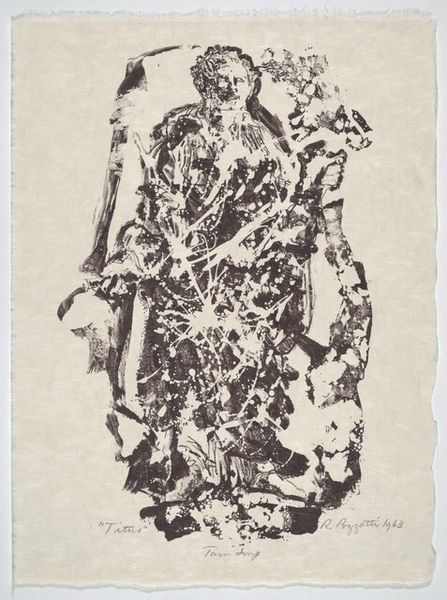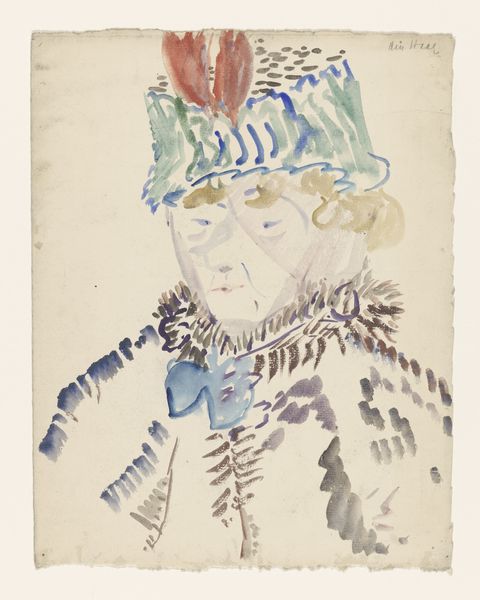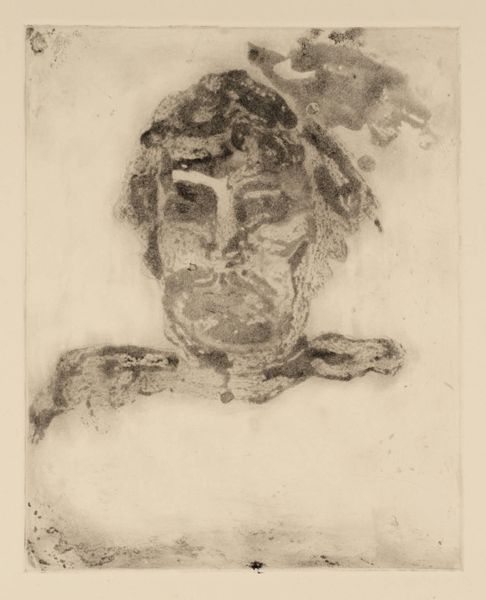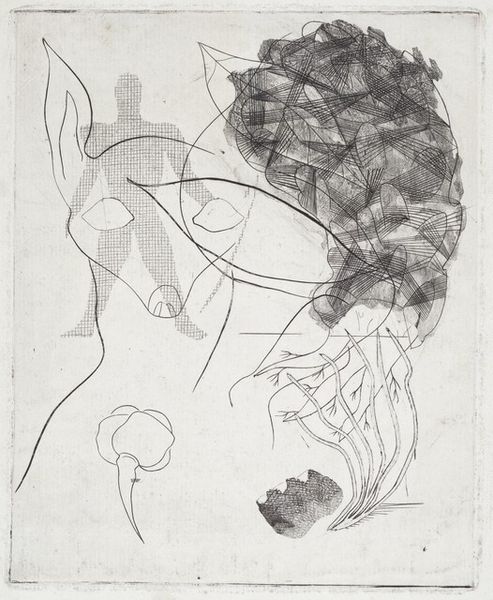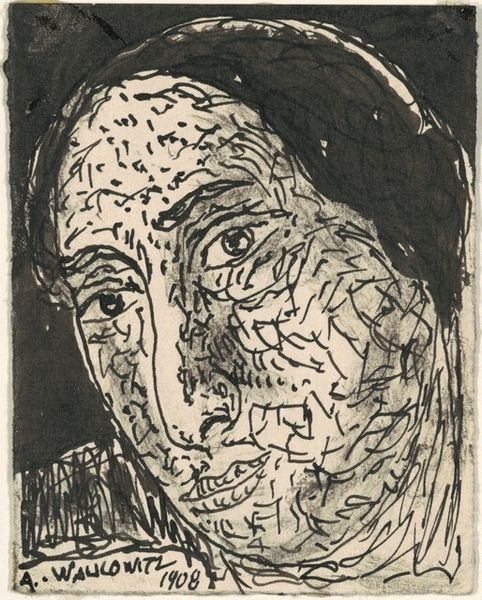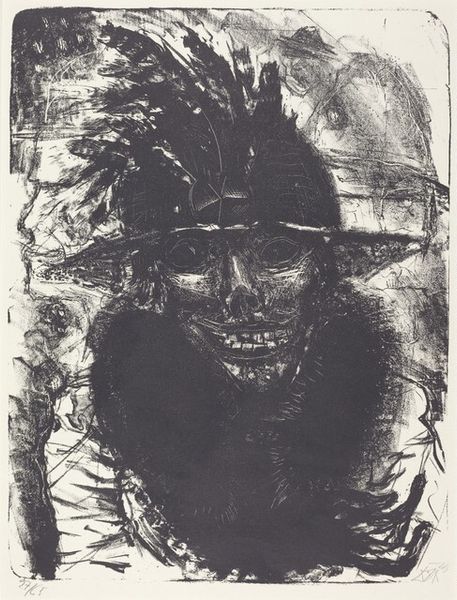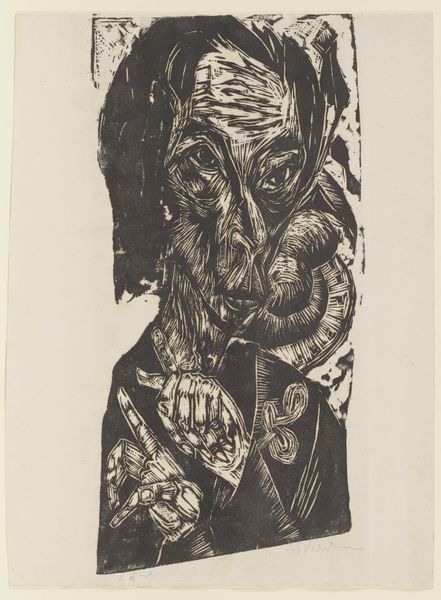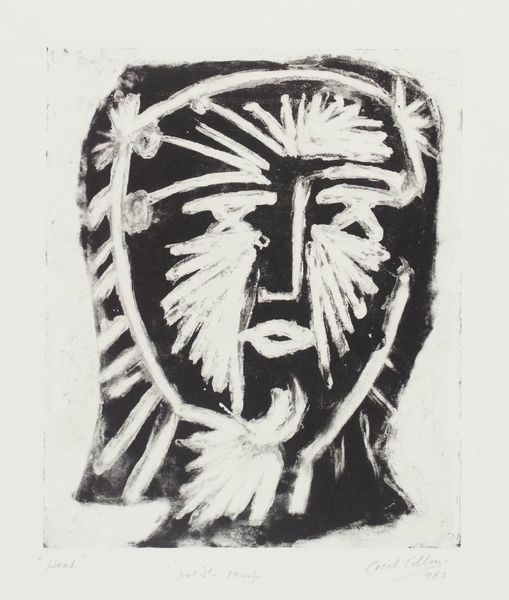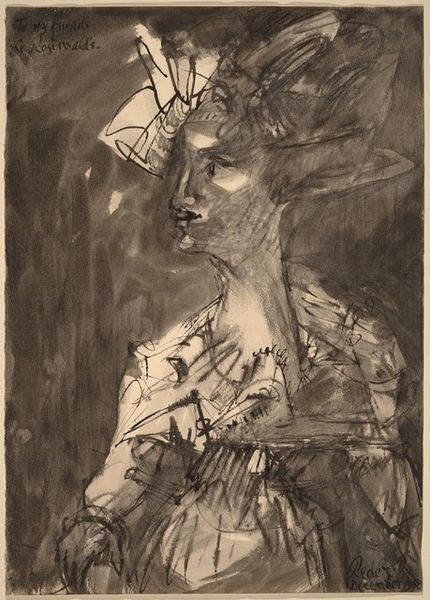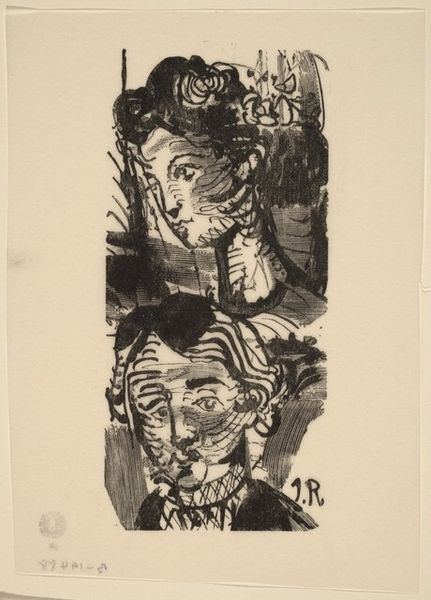
print, ink, graphite
#
portrait
#
ink drawing
# print
#
figuration
#
ink
#
graphite
#
modernism
Copyright: National Gallery of Art: CC0 1.0
Curator: Before us, we have Rudy Pozzatti's "Julius Caesar," a 1963 print rendered in ink and graphite. What are your initial thoughts? Editor: Austere. Stark even. The limited palette amplifies the severity of Caesar's expression, or what we assume to be Caesar—more like an interrogation of power itself. Curator: Note how the dynamism of line, particularly in the chaotic background and Caesar's attire, creates tension. The figure isn't simply represented; it's constructed through bold marks and textural contrast. Look at the heavy crown, juxtaposed with his tired, drooped eyes. Editor: Exactly! He is burdened by it. Beyond its formal qualities, consider the piece's historical resonance, produced at a moment when ideas of power, authority, and even empire were being aggressively questioned across multiple cultural and political landscapes. Is Pozzatti commenting on the human cost, perhaps, of unrestrained power through the Caesar allegory? Curator: Possibly. The strategic use of white space surrounding the darker regions draws my eye directly to Caesar’s expression. Consider also how Pozzatti avoids any picturesque effect or seductive artistry, reducing Caesar to a play of light and shadow. Editor: And that simplification renders him oddly contemporary. In a decade of enormous global upheaval, of civil rights movements and anti-war protests, Caesar becomes Every Tyrant. It invites us to critically reassess the nature of leadership. How complicit are the observers of Caesar’s actions versus Caesar himself? Curator: Perhaps, but by employing a fairly loose approach, Pozzatti moves past literal portraiture into something closer to the study of the aesthetic properties of decay, deconstructing power dynamics. Editor: Perhaps! All of these different views show us something new. Curator: This exploration certainly invites layered interpretation—well beyond any simple reading.
Comments
No comments
Be the first to comment and join the conversation on the ultimate creative platform.
